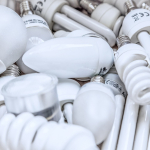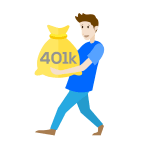The landscape of Homeowners Insurance is undergoing a significant transformation, increasingly impacted by climate change. Across the nation, homeowners are grappling with a coverage crisis as more frequent and intense natural disasters like wildfires, hurricanes, and floods are pushing insurance providers to re-evaluate their risks, leading to unprecedented rising premiums or even market withdrawals. This guide will help you understand the forces behind this crisis and equip you with practical strategies to adapt and secure your home’s protection in an evolving environment.
Understanding the Homeowners Insurance Crisis
You might be wondering why your premiums are rising premiums or why finding coverage has become such a challenge. Essentially, we are facing a coverage crisis driven by several critical factors. One significant culprit is climate change, leading to a surge in natural disasters. These events, from severe storms to wildfires, result in massive claims, thus increasing insurers’ costs.
To illustrate the scale of this issue, consider these key points:
| Factor | Impact on Insurance |
|---|---|
| Climate Change | Intensifies weather events, increasing claim frequency. |
| Natural Disasters | Causes extensive damage, leading to higher payout costs. |
| Inflation | Boosts rebuilding and repair expenses. |
| Increased Claims | Forces insurers to raise rates or exit high-risk markets. |
Therefore, understanding these interconnected challenges is crucial as you navigate the evolving landscape of securing your home.

As you’ve likely noticed, rising premiums are a significant concern, and climate change plays a pivotal role. Increasingly severe natural disasters like hurricanes, wildfires, and floods are driving up the cost for insurers. Consequently, many companies are re-evaluating their risks, leading to a coverage crisis in vulnerable areas.
Here’s how these factors are impacting your premiums:
| Factor | Impact on Premiums |
|---|---|
| Climate Change | Increases frequency and intensity of perils |
| Natural Disasters | Causes extensive damage, leading to higher payouts |
| Rising Premiums | Reflects increased risk and rebuilding costs |
| Coverage Crisis | Insurers withdraw, limiting options for homeowners |
Understandably, this situation makes securing comprehensive and affordable coverage more challenging. Therefore, it’s crucial to understand these underlying causes to navigate the evolving market effectively.
Adapting to the New Normal: Strategies for Homeowners Insurance
As climate change escalates, driving more frequent and severe natural disasters, you must adapt to the evolving landscape of coverage. Consequently, you will notice rising premiums and, in some areas, a coverage crisis, as insurers withdraw. Therefore, proactively seek strategies to protect your home and finances.
To begin with, always determine your actual coverage needs. Instead of guessing, evaluate the current cost to rebuild your home, not its purchase price. Furthermore, complete a detailed inventory of your belongings for accurate personal property coverage. When gathering quotes, prepare essential information such as your home’s square footage, year built, roof type, heating system, and foundation. Subsequently, reach out for quotes through independent agents, directly with insurers, or online.
Moreover, explore all available discounts. For example, many insurers offer savings for being claims-free, having a college degree, or bundling your home and auto policies. However, do not only compare prices. Instead, assess the insurer’s reputation for financial strength (an A- or higher from AM Best is ideal) and customer service, as the cheapest premium may not offer the best protection during a claim. Ultimately, compare annually to ensure you are always getting the best rates, potentially saving $200 to $500 compared to auto-renewing.
Frequently Asked Questions
What factors are contributing to the increase in homeowners insurance costs?
Several factors are driving up homeowners insurance costs. Inflation plays a significant role, increasing the price of materials and labor needed for repairs. Construction costs are also on the rise, directly impacting the expense of rebuilding or repairing a home after damage. Additionally, extreme weather events are occurring in unexpected locations with greater frequency, leading to more claims and higher payouts for insurance companies. These combined elements contribute to the overall increase in premiums for homeowners.
How can I determine the right amount of home insurance coverage I need?
To determine the appropriate amount of home insurance coverage, it’s crucial to calculate the current cost to rebuild your home, not its purchase price. This figure should account for construction costs in your area. Beyond the structure, create a detailed inventory of all your belongings to accurately assess the personal property coverage you’ll require. Underestimating these amounts could leave you underprotected in the event of a significant loss, while overestimating could lead to unnecessary overpayment for your policy.
What information should I gather to get accurate home insurance quotes?
When seeking accurate homeowners insurance quotes, it’s essential to have specific information readily available. Start with the basics of your home, including its square footage, the year it was built, and details about its roof type, heating system, and foundation. Providing precise information about these features allows insurers to provide more exact quotes tailored to your property. The more comprehensive the information you provide, the more accurate your quotes will be.
Are there strategies to save money on homeowners insurance?
Yes, there are several strategies to potentially save money on homeowners insurance premiums. One effective method is to compare quotes from multiple insurers annually, as rates can change frequently, and loyalty discounts may not always match competitive offers. You can also ask about available discounts, as many insurers offer savings for being claims-free, having a college degree, or working in specific professions. Bundling your home and auto insurance policies with the same provider is another common way to reduce costs. Additionally, choosing a higher deductible can lower your premium, but ensure it’s an amount you’re comfortable paying out-of-pocket.














Comments are closed.